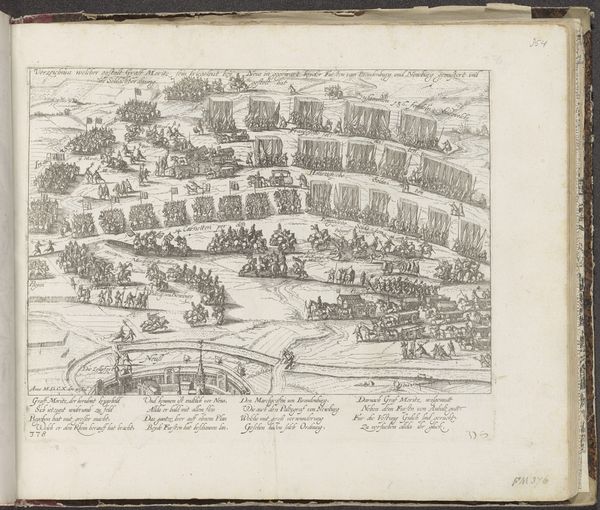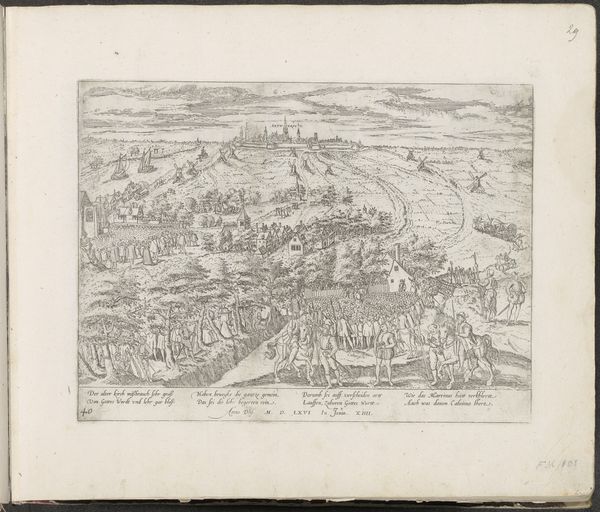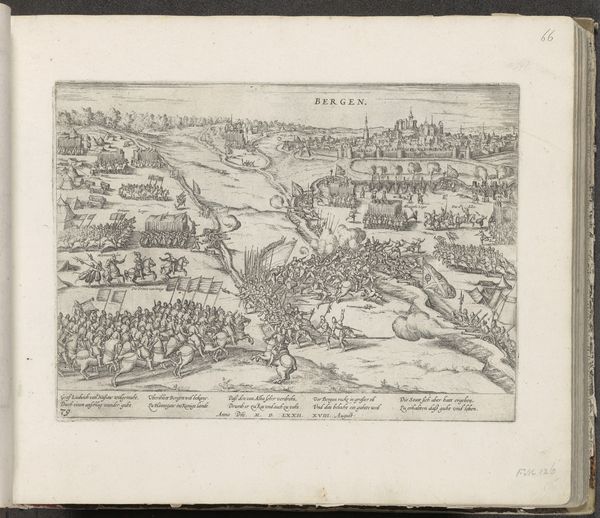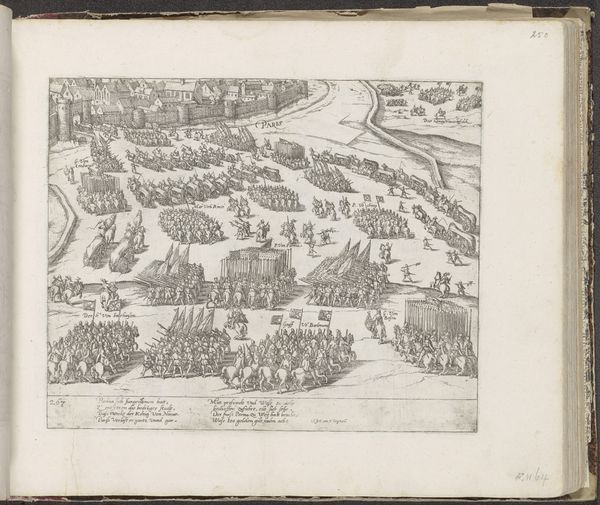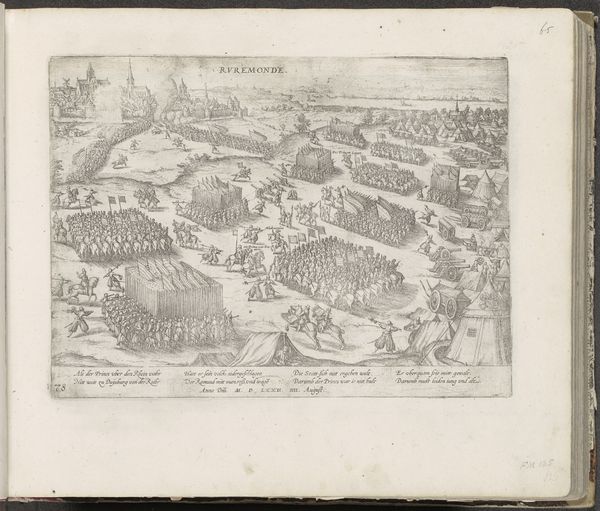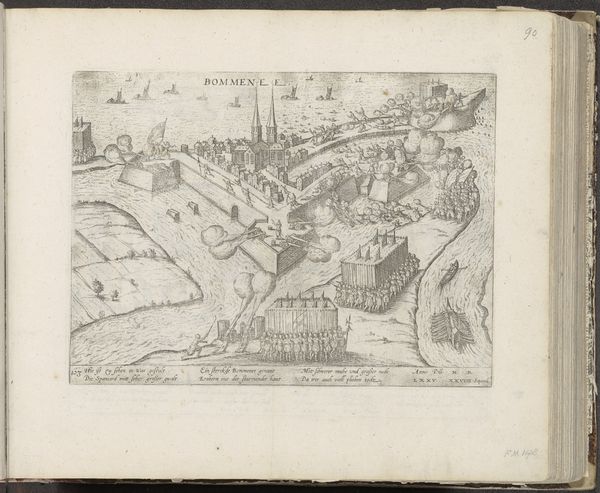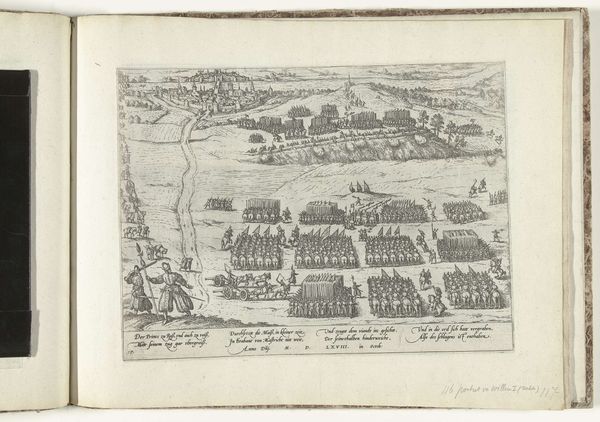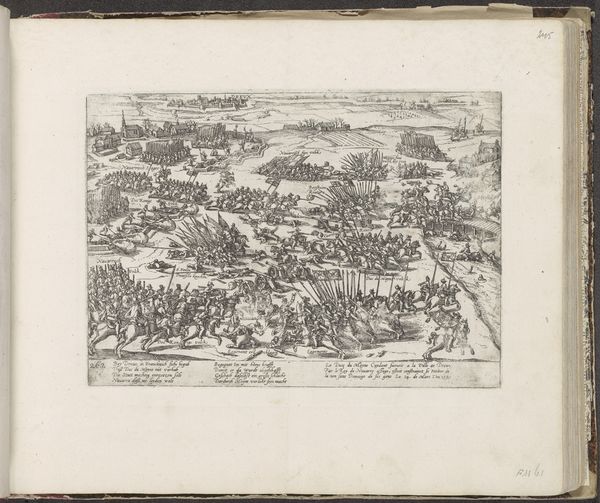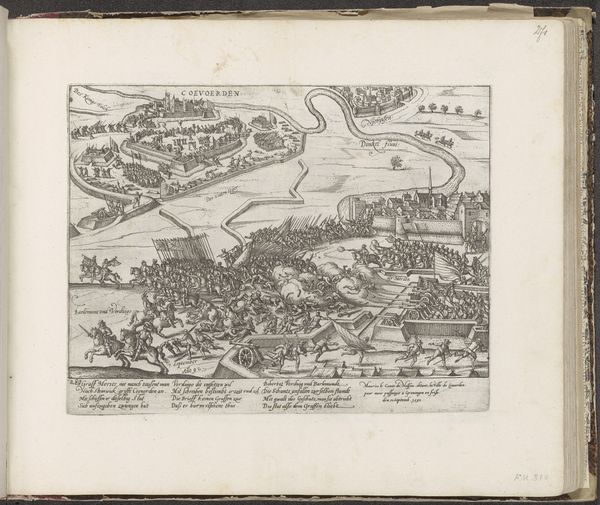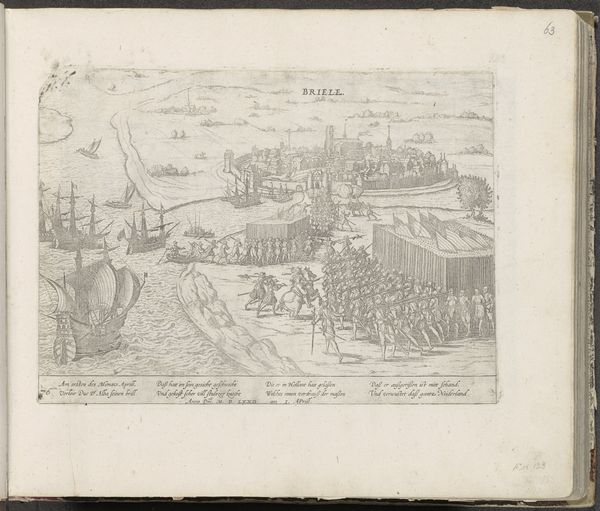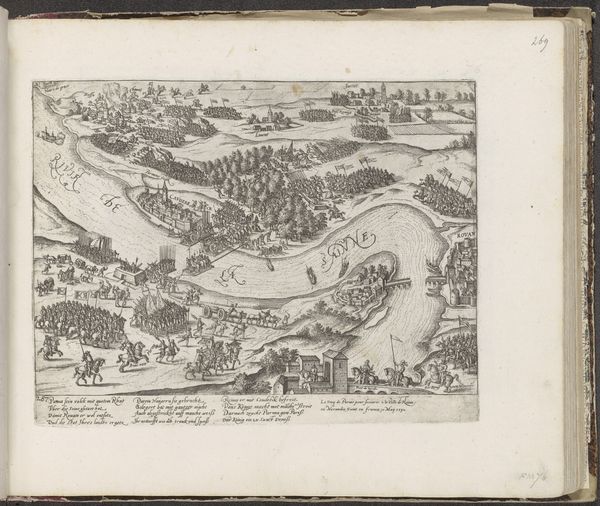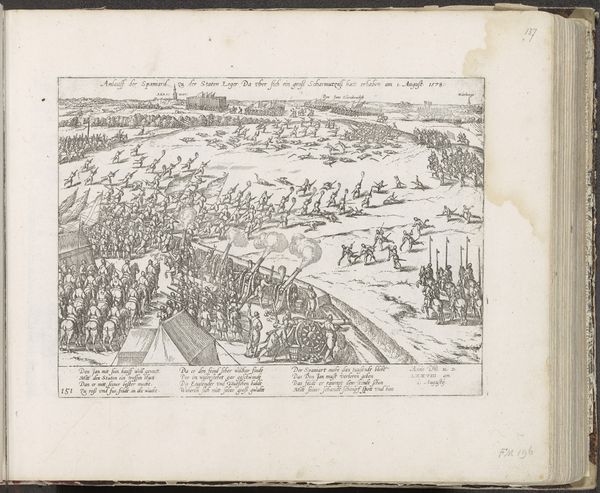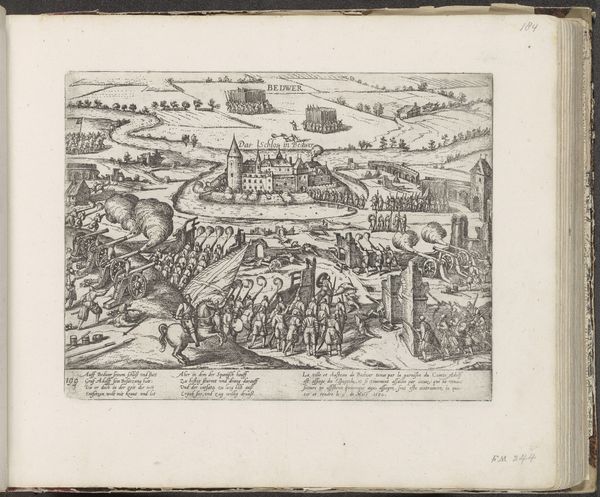
print, engraving
# print
#
landscape
#
mannerism
#
history-painting
#
engraving
Dimensions: height 211 mm, width 284 mm
Copyright: Rijks Museum: Open Domain
Curator: This print, "Prins van Oranje trekt over de Maas, 1568," by Frans Hogenberg, offers a detailed landscape, meticulously engraved likely sometime between 1568 and 1572. Its location at the Rijksmuseum situates it among a compelling collection of early modern prints. Editor: Immediately, I’m struck by the vastness communicated by the almost miniaturized depiction of such massive troop movements, and rendered, as it is, in the sharp, clean lines. There is almost a bird's-eye view of history unfolding. Curator: Hogenberg indeed mastered the art of organizing information. The linear precision evident in the marching formations, along with the consistent stroke used throughout, allows for an almost scientific rendering. The print, although about conflict, is highly structured, and the artist’s mark is almost completely absent. Editor: But it isn’t simply an objective record. We need to think about how this event was staged. How does seeing it displayed this way bolster the Dutch national consciousness in that moment, and afterwards? Consider that landscape itself: whose land are these soldiers marching on? This artwork doesn't exist in a vacuum; it is completely of its time. Curator: Your observation speaks to the way Mannerism adopted and manipulated perspective, which heightens this symbolic intent. Editor: Yes. By framing William's campaign so precisely, and glorifying its strategic organization, the artist makes an implicit argument about its rightness, regardless of its political motivations. It’s as if they are trying to convince themselves that violence is the answer by overemphasizing its aesthetic organization. Curator: I appreciate how your socio-political understanding enhances what appears, formally, as just a recording of facts, albeit an impressive display of design elements such as line, composition, and scale that makes this engraving so impressive to look at and study. Editor: And I appreciate that your analysis of technique inspires closer looking. Together, it brings a layered perspective that lets us think critically.
Comments
No comments
Be the first to comment and join the conversation on the ultimate creative platform.
